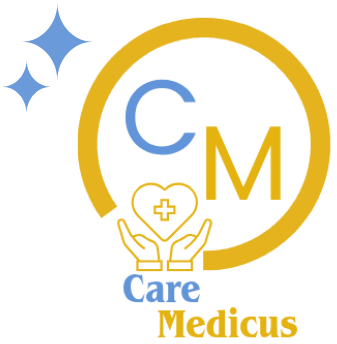Medical billing is the financial backbone of any healthcare practice. It’s the complex process of translating patient care into revenue. When it works seamlessly, it supports the financial health of the organization, allowing providers to focus on what matters most—patient outcomes. However, when errors creep in, the consequences can be staggering, leading to significant revenue loss, increased administrative burdens, and a breakdown in patient trust.
Industry reports consistently highlight a startling reality: up to 80% of medical bills contain errors. These are not just minor typos; they are costly mistakes that contribute to billions in lost revenue for U.S. providers each year. For the average physician, unaddressed errors can mean a loss of $100,000 annually. For hospitals, denial rates average between 5% and 10% of net patient revenue. The cost to rework a single denied claim is around $25, and with millions of claims being processed daily, these expenses accumulate rapidly.
Beyond the direct financial losses, billing errors create a ripple effect of inefficiency. Staff must divert time and resources from patient-facing activities to investigate, correct, and resubmit denied claims. This administrative rework inflates operational costs and delays cash flow, sometimes pushing payments past 60 days. In a sector where financial stability is crucial, these inefficiencies can threaten a practice’s ability to operate.
This guide explores the hidden costs associated with medical billing mistakes, from financial losses and operational inefficiencies to the erosion of patient trust. We will identify the most common causes of these errors and provide actionable strategies—including technology solutions, staff training, and internal audits—to help your practice prevent them, secure your revenue cycle, and maintain a healthy relationship with your patients.
The Financial Impact of Billing Mistakes
The financial repercussions of medical billing errors extend far beyond the immediate loss from a single denied claim. They represent a significant and persistent drain on a healthcare organization’s resources, impacting everything from cash flow to long-term profitability. Industry data paints a clear picture of the scale of this problem.
With estimates suggesting that up to 80% of medical bills contain inaccuracies, providers are facing an uphill battle. These errors contribute to a staggering $125 billion in annual losses for U.S. healthcare providers due to denied claims, underpayments, and the administrative costs of rework. The average cost to rework just one denied claim is $25, a figure that multiplies quickly across thousands of claims. For many practices, this results in significant revenue leakage; some sources suggest that approximately 7% of a physician’s annual revenue is lost simply due to billing errors.
The impact on cash flow is equally severe. Inefficient billing practices mean that over 77% of providers experience reimbursement delays of more than 30 days. When revenue that should be collected within a standard 30-40 day cycle is pushed past 60 days, it creates cash shortages that can jeopardize a practice’s ability to cover essential overhead expenses like rent, salaries, and supplies. For smaller clinics operating on thin margins, these delays can be devastating, potentially leading to staffing cutbacks or a reduction in services.
Furthermore, persistent billing errors can trigger costly audits and investigations from payers and government bodies. Submitting inaccurate claims, even unintentionally, can lead to accusations of fraud under regulations like the False Claims Act (FCA). Penalties under the FCA are severe, sometimes recovering up to three times the amount of damages incurred by the government. In recent years, healthcare systems have faced multi-million dollar settlements over fraudulent billing practices. For example, a Texas healthcare system paid $2.83 million in 2020 to resolve allegations of improper billing and upcoding. These legal battles are not only expensive but also incredibly time-consuming, diverting focus and resources away from patient care.
Read More: Minimizing Claim Rejections in 2025: A Guide For Healthcare Providers
Top Causes of Billing Errors
To effectively combat billing errors, it’s essential to understand their root causes. These mistakes often stem from a combination of human error, systemic inefficiencies, and outdated processes. Here are some of the most common culprits that lead to claim denials and revenue loss.
Inaccurate Patient Demographics and Insurance Verification
Simple mistakes made during patient registration are one of the leading causes of claim denials. Research from the Medical Group Management Association (MGMA) indicates that up to 25% of denials are due to invalid patient data. This includes misspelled names, incorrect insurance ID numbers, outdated addresses, or a wrong date of birth. When patient information doesn’t match what the insurer has on file, claims are immediately rejected.
Compounding this issue is the failure to verify insurance eligibility before services are rendered. Patient coverage can change unexpectedly, and without real-time verification at every encounter, practices risk billing the wrong payer or submitting claims for non-covered services.
Medical Coding Errors
Medical coding translates diagnoses and procedures into universal alphanumeric codes that payers use to process claims. Accuracy is paramount, but errors are common.
- Incorrect Diagnosis or Procedure Codes: Using outdated or improper ICD-10 (diagnosis) or CPT (procedure) codes is a primary reason for denials. With thousands of codes and frequent updates, coders must stay current to ensure accuracy.
- Upcoding and Downcoding: Upcoding involves billing for a more expensive service than what was actually provided, which carries serious legal risks, including fraud allegations. Conversely, downcoding means billing for a less complex service, leading to underpayment and lost revenue.
- Incorrect Modifiers: Modifiers provide additional information about a service, such as specifying which side of the body a procedure was performed on (-RT or -LT) or indicating that a service was distinct from another performed on the same day (-59). Forgetting to include required modifiers can cause denials for improper bundling. It’s estimated that healthcare organizations leave 2-5% of their reimbursement on the table due to improperly applied modifiers.
Insufficient Documentation and Lack of Medical Necessity
Payers require clear and comprehensive documentation to support the services billed. If a provider’s notes are incomplete, missing signatures, or fail to establish the medical necessity for a procedure, the claim is likely to be denied. This is a major risk area, as payers can recoup payments years later if an audit reveals that documentation did not justify the services rendered.
Inadequate Staff Training and Process Gaps
Many billing errors can be traced back to a lack of ongoing education for billing staff. The healthcare landscape is constantly changing, with new regulations, coding updates, and payer-specific rules emerging regularly. Without continuous training, even experienced staff can make mistakes. Furthermore, a lack of standardized workflows and quality assurance checks, such as a second-level review process, means errors are more likely to slip through and reach the payer.
Read More: AI and Predictive Analytics in Healthcare to Reduce Claim Denials
Technology Solutions for Error Reduction
In an industry burdened by administrative complexity, technology offers powerful solutions to streamline medical billing, reduce human error, and improve financial outcomes. By automating manual processes and integrating intelligent systems, healthcare providers can build a more resilient revenue cycle.
Automate Claims Management and Insurance Verification
Manual data entry is a primary source of billing errors. Revenue Cycle Management (RCM) technology and modern Electronic Health Record (EHR) systems reduce the need for human touchpoints by automating key tasks. For instance, real-time insurance verification tools can be integrated directly into the scheduling and check-in process. These systems instantly confirm a patient’s eligibility and benefits, flagging potential coverage issues before services are even rendered. This simple step can prevent a significant percentage of denials related to inaccurate patient or insurance information.
Automation can also streamline the entire claims lifecycle. RCM software can track the status of claims in real time, automatically follow up on unpaid claims, and provide analytics on denial patterns. By using rules-driven workflows, these platforms ensure that claims are submitted correctly the first time and that any issues are addressed promptly.
Leverage AI and Computer-Assisted Coding
The complexity of medical coding makes it a prime area for technological intervention. Computer-assisted coding (CAC) engines and AI-powered encoders can be integrated with a practice’s EHR to improve accuracy and efficiency. These tools analyze clinical documentation and suggest the appropriate ICD-10 and CPT codes, reducing the cognitive load on coders and minimizing mistakes.
Furthermore, advanced claims scrubbing software uses rule-based logic to validate codes, modifiers, and patient data against payer-specific requirements before a claim is submitted. These systems act as a crucial quality check, catching potential errors that would otherwise lead to denials. As a result, practices can significantly increase their first-pass claim acceptance rates, accelerating cash flow and reducing the administrative costs of rework.
Enhance the Patient Experience with Portals and Cost Estimates
Technology can also improve transparency and trust with patients. Patient portals allow individuals to view their billing information online, update their demographic data, and make payments securely. This not only empowers patients but also ensures that the practice has the most accurate information on file.
In line with regulations like the No Surprises Act, providers can use technology to deliver pre-service cost estimates. By giving patients a clear understanding of their financial responsibility upfront, practices can prevent billing disputes, improve patient satisfaction, and increase the likelihood of collecting payments.
Read More: Benefits of Cloud Based System in Healthcare
Training and Internal Audits
While technology provides the tools for a more efficient billing process, a well-trained and accountable team is essential to wield them effectively. Continuous education and rigorous internal audits are the human-powered pillars that support an error-free revenue cycle.
Invest in Ongoing Staff Education
The rules of medical billing are not static. Coding standards, payer policies, and government regulations are constantly evolving. To keep pace, healthcare organizations must invest in regular training for their billing and administrative staff. This education should cover:
- Annual updates to ICD-10-CM and CPT codes.
- Payer-specific billing guidelines and modifier usage.
- Changes in healthcare regulations, such as HIPAA and the False Claims Act.
- Best practices for using the practice’s billing software and EHR system.
Making billing certifications a priority and promoting ongoing credentials demonstrates a commitment to excellence and ensures your team is equipped with the latest knowledge. A well-trained team is not only more accurate but also more confident, capable of identifying and resolving issues before they escalate.
Implement a System of Checks and Balances
No single person should be solely responsible for the entire billing process. Implementing a “two-pass” or second-level review process creates a crucial safety net. In this model, one team member codes the claim, and another reviews it for accuracy before submission. This system of checks and balances helps catch errors that a single individual might overlook, significantly improving the quality of claims.
Conduct Routine Internal Audits
Regular internal audits are proactive measures to identify and correct systemic issues. By periodically reviewing a sample of charts and claims, you can uncover recurring errors, knowledge gaps, and process inefficiencies. These audits should focus on:
- Coding Accuracy: Are the codes assigned supported by the clinical documentation?
- Documentation Quality: Is the documentation complete, signed, and sufficient to establish medical necessity?
- Modifier Usage: Are modifiers being applied correctly according to payer rules?
Tracking key performance indicators (KPIs) like denial rates, days in accounts receivable (AR), and first-pass resolution rates provides a high-level gauge of billing performance. Analyzing denial trends can help pinpoint the root causes of common errors, allowing you to develop targeted solutions and training initiatives.

Long-Term Strategies for Error Prevention
Fixing billing errors after they occur is a costly and inefficient cycle. The most effective approach is to build a proactive system designed to prevent mistakes from happening in the first place. This requires a long-term strategic commitment to optimizing technology, refining processes, and fostering a culture of accuracy.
First, develop clear and standardized billing policies and procedures that are accessible to everyone on your team. These workflows should be designed to catch mistakes early, with built-in checkpoints like secondary reviews and required approvals before claims are submitted. Fostering collaboration between clinical and administrative teams is also key, as open communication can help clarify documentation and ensure coding accurately reflects the care provided.
Next, continue to leverage and optimize technology. Ensure your EHR and RCM systems are fully integrated to eliminate data silos and automate manual tasks. Regularly review and update the rules in your claims scrubbing software to align with the latest payer requirements.
Finally, cultivate a culture of accountability and continuous improvement. Set clear performance expectations for your billing team and monitor KPIs to track progress. Encourage open communication where staff feel comfortable highlighting potential issues without fear of blame. When errors are viewed as opportunities for learning and process improvement, your organization can adapt and strengthen its defenses against revenue loss.
By embracing prevention through a combination of technology, rigorous processes, and a well-trained team, healthcare providers can drastically reduce billing mistakes, secure their financial health, and dedicate more resources to their core mission: delivering excellent patient care.
Read More: Security, Fraud Prevention & Compliance in Healthcare: Key Priorities for Medical Billing Systems
The Way Forward
At Care Medicus, we believe that preventing billing errors is far more powerful—and far more cost-effective—than correcting them after the fact. The path to financial stability begins with a proactive system built on technology, standardized processes, and a culture committed to accuracy at every step.
Now is the time to strengthen your billing operations. Establish clear, accessible workflows that include checkpoints, secondary reviews, and structured approvals before claims are submitted. Encourage collaboration between clinical and administrative teams to ensure documentation and coding align seamlessly.
Invest in integrated technology that eliminates data silos, automates manual tasks, and keeps pace with evolving payer requirements. And above all, cultivate a culture of accountability, continuous improvement, and open communication—one where errors are treated as opportunities for growth rather than setbacks.
Partner with Care Medicus to build a prevention-first billing framework that reduces costly mistakes, protects your revenue, and allows your organization to focus on what truly matters: delivering outstanding patient care.






Leave a Reply